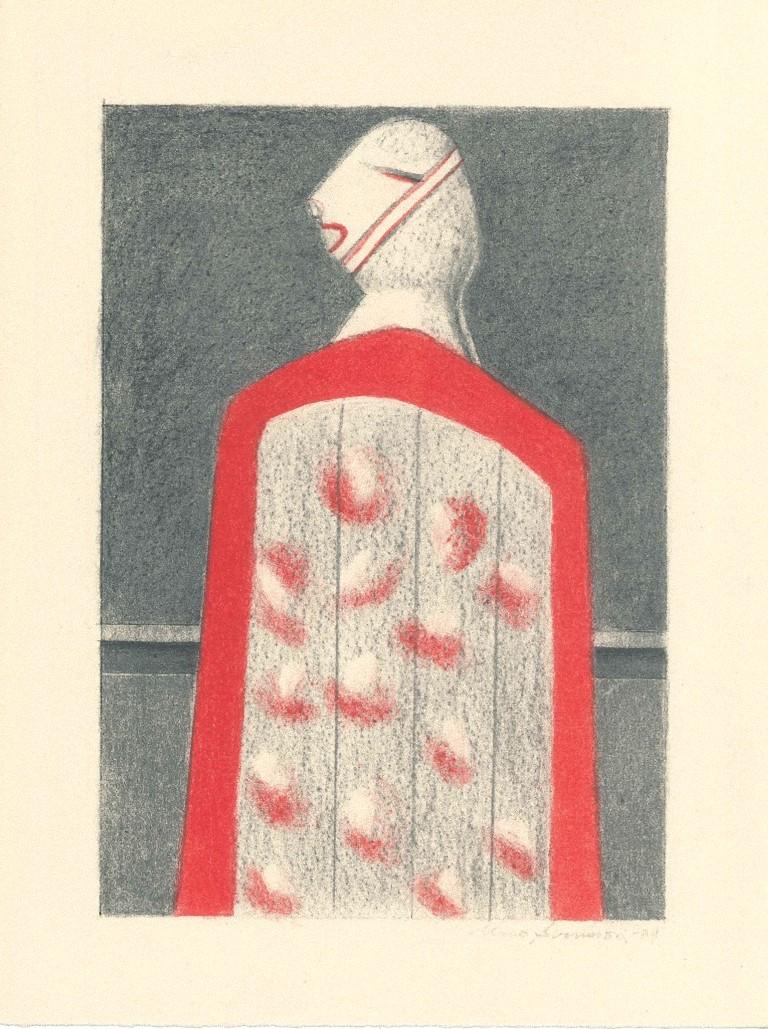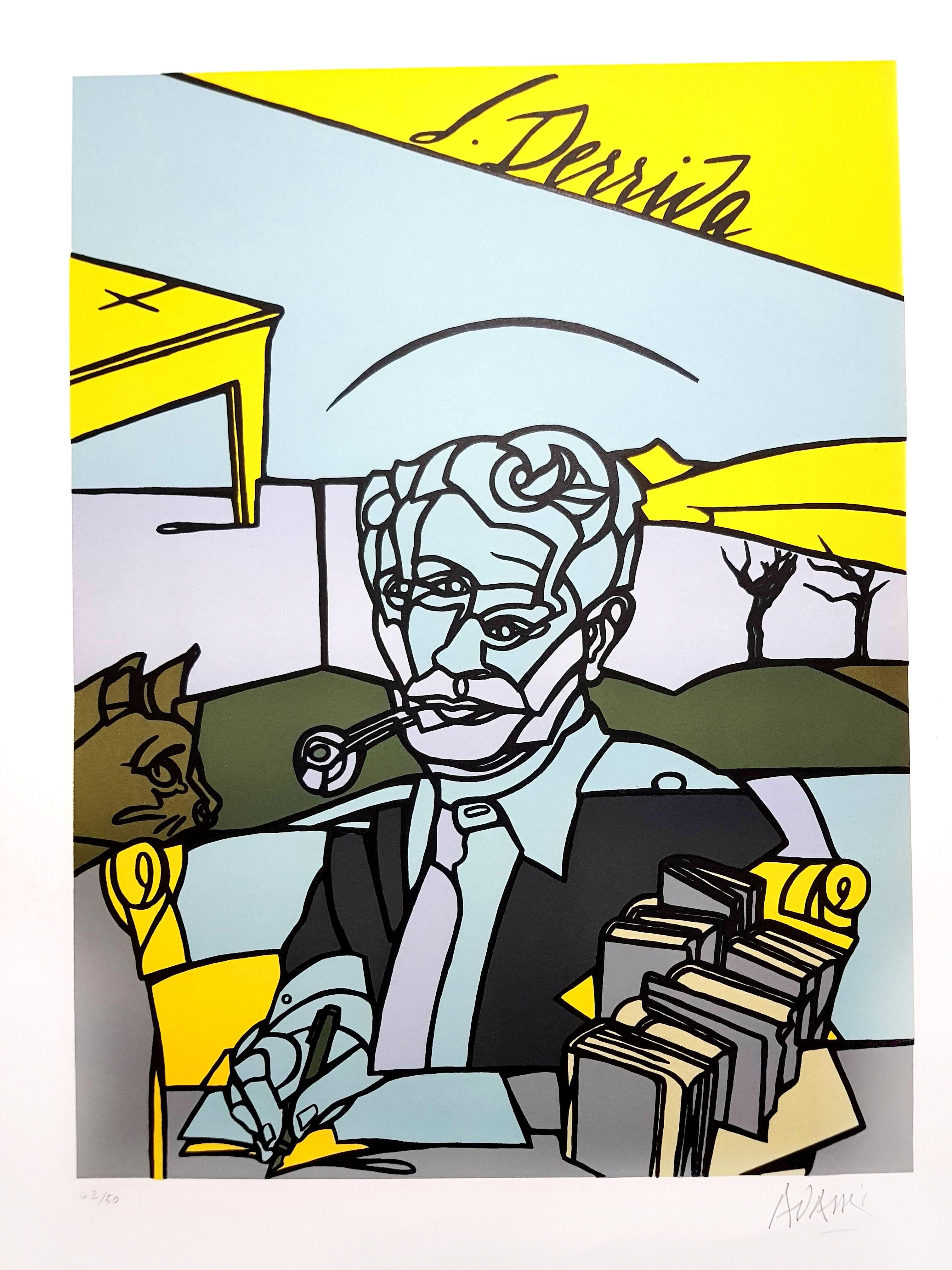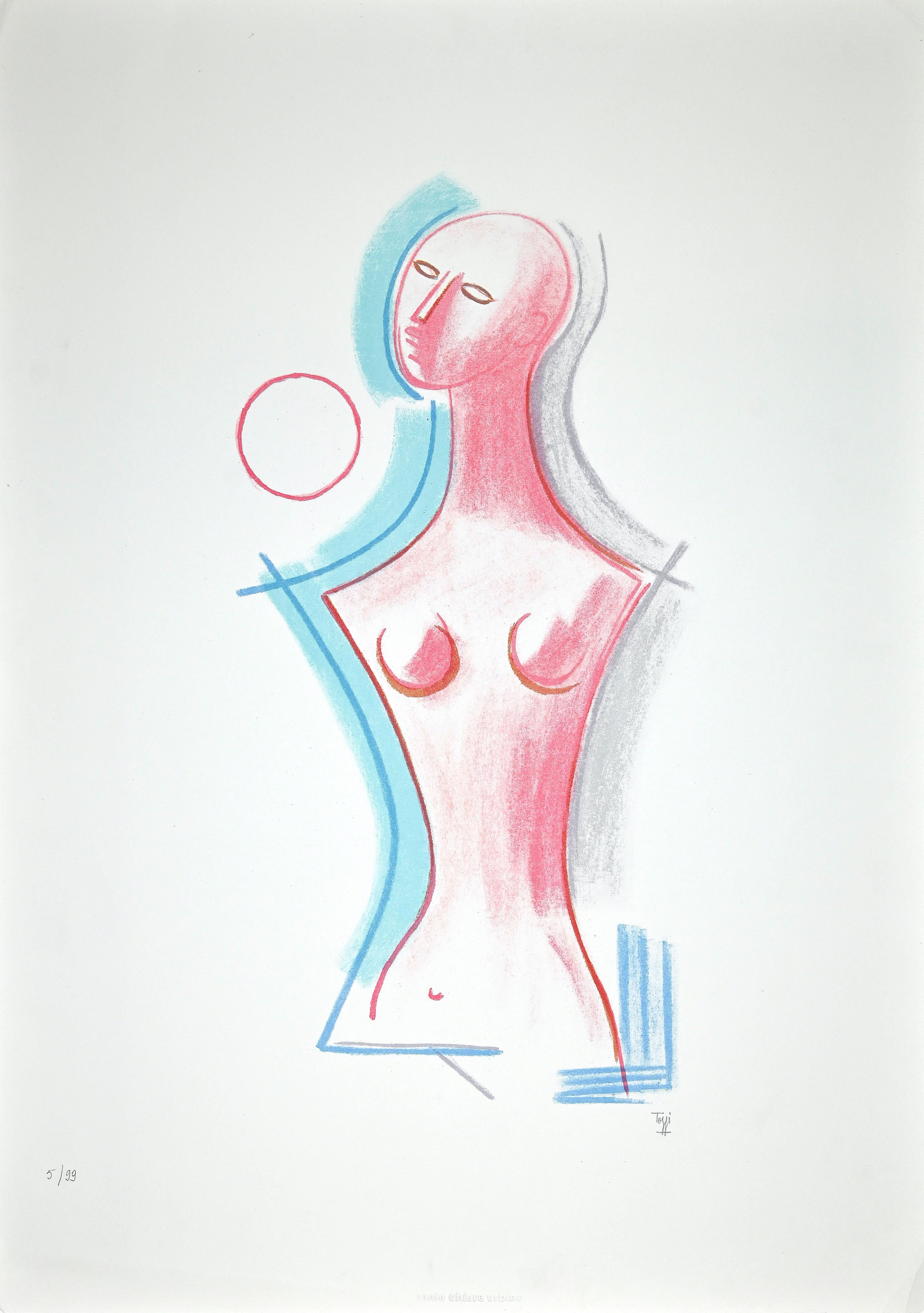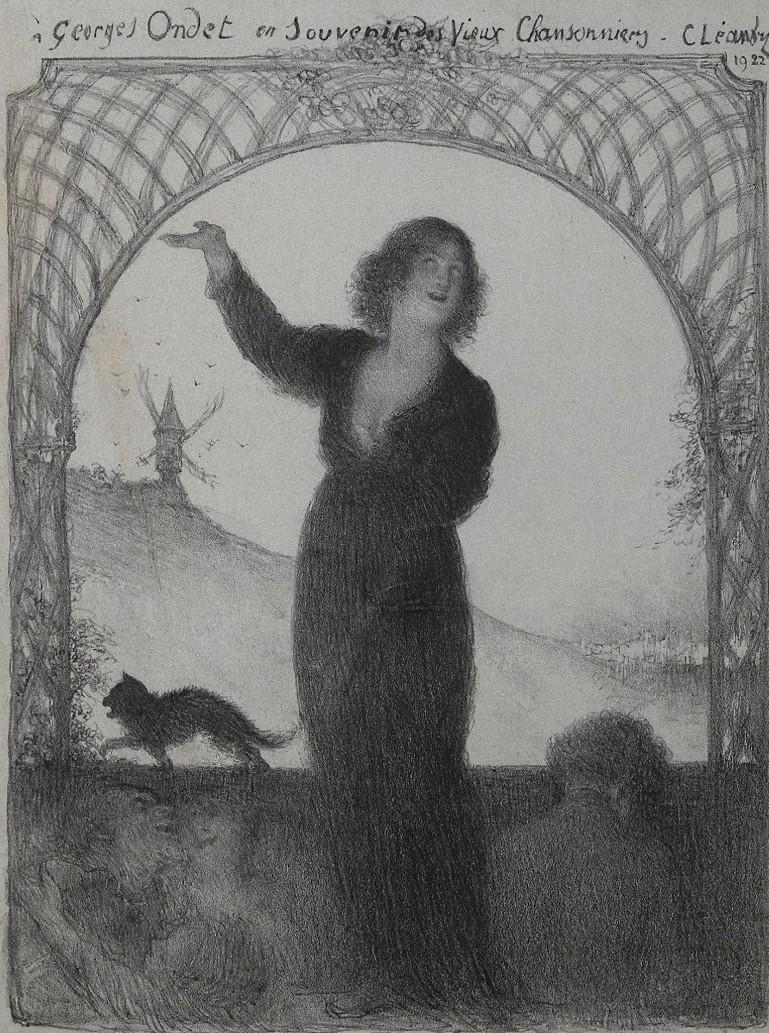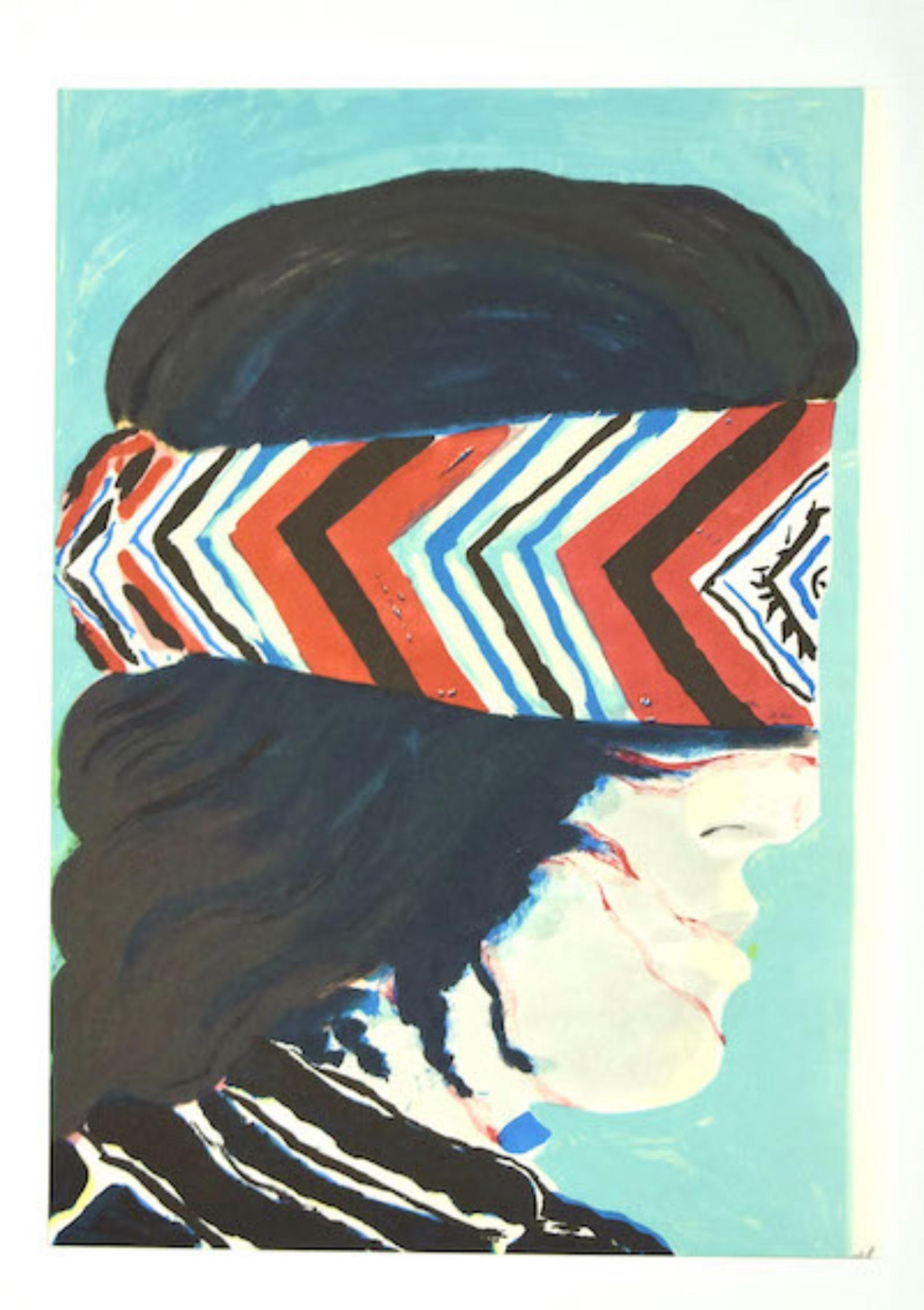Items Similar to The Bird - Lithograph
Want more images or videos?
Request additional images or videos from the seller
1 of 7
(after) Georges BraqueThe Bird - Lithograph1965
1965
About the Item
Title: The Bird
Printed signature
Dimensions: 38 x 28 cm
from the edition of 250 as issued in Warnod, Andre, "Les Peintres mes amis" (Paris: Les Heures Claires, 1965)
The father of Cubism
Three Cubist that distinguishes art historian periods were initiated and developed by Georges Braque: The Cubist Cézanne (1907-1909), Executive (1909-1912) and synthetic (1912-1922).
Post-Impressionist and fawn, Braque no longer adheres to the contingency of a decorative way or the other. Cézanne’s paintings exhibited at the Grand Palais during the retrospective of 1907 are a revelation: Cézanne sought and invented a pictorial language. In his footsteps, Braque went to the South with the reasons of the Master. He returned with Estaque landscapes and surprising Ciotat it keeps Cezanne geometric model and retains the “passages” continuity from one surface to another to create the sensation of “turning around” of the object represented. But he wants to go after the consequences of the vision of Cezanne. In his paintings Houses in L’Estaque (1908) it simplifies the volumes of houses, neglects detail by removing doors and windows: the plastic rhythm that builds the table. Large Nude , a masterpiece of the period, can be considered the first work of Cézanne cubism .
Systematizing and deepening Braque discoveries open the door analytical cubism. In 1909, his painting became more cerebral than sensual. The pattern is recreated in the two-dimensionality of the canvas, leaving aside any illusionistic perspective. In Still Life with Violin, objects are analyzed facets according to their characteristic elements, each facet referring to a particular view of the object. There are so many facets of points selected view: Table reflects the knowledge of the object and the ubiquity of the eye. Moreover, Braque is looking for the essence of the objects in the world rather than their contingency, which explains the absence of light source and use of muted colors (gray, ocher), contingent aspects of the object . But formal logic has stepped facets, erased any anecdote to the object and ultimately led to his painting a hermetic more marked on the edge of abstraction (see the series of Castle Roche-Guyon ).
Braque, anxious to keep the concrete and refusing at all costs that the logic of Cubism takes the paintings to abstract, reintroduced signs of reality in his paintings in 1912 marks the beginning of Synthetic Cubism. Historians speak of “signs of real” rather than reality because what interests Braque, this is not to put reality into a table, but to create a painting which, by its language, refers to the real. To do this, he invented two major techniques XX th century inclusions and contributions. The inclusions consist of painting objects that have no real depth, materials (wallpaper in Nature morte aux playing cards faux wood is a pictorial inclusion) or letters (calligraphic inclusion in Portuguese ), made first brush and a few months later stencil. Contributions are defined in contrast with the collage on canvas of foreign materials: glued or sand paper, sawdust, etc.. Regarding the collages, Braque used for the first time in September 1912 a piece of adhesive paper imitating faux wood Compote and Glass , then the packet envelope of tobacco Bock in 1912-1913, or an advertisement in Damier , 1913). Inputs and inclusions refer to an external object in the table, without “emulate” this object. Away from their appearances, objects are represented in closest essence of the objects in the real world sense.
This is also the time of Synthetic Cubism that Braque invented paper sculpture. There are, unfortunately, and no one is living proof of a photograph makes it possible to realize: Paper and paperboard.
Métamorphoses period(1961-1963).
In 1961, Georges Braque worked on a Greek head for the Louvre, which obsesses him, and he wishes to free his mind. He tried several times to bring out the paint and the result was unsatisfactory. He thinks the ultimate metamorphosis its Greek head projected in three dimensions. He calls in his studio of Baron Heger Loewenfeld, master lapidary, and he communicates his enthusiasm during the “fateful encounter.” Nine months later, in honor of the eighty years of Georges Braque, Heger Loewenfeld offers the Master of the ring Circe: the famous Greek head finally exorcised, carved in an onyx. Braque Loewenfeld then asked to identify other issues that haunt him.
From dated and signed by Georges Braque, Heger gouaches Loewenfeld shapes works in the fields of jewelery, lapidary art, sculpture and etrog.
In September 1962, Heger of Loewenfeld and André Malraux meet the Ministry of Cultural Affairs. The two men share their impressions of aesthetes around the cabinet precious sculptures presented by Baron. Malraux, fascinated, considers that dealing with “the apotheosis of Braque” and orders on the field that show these masterpieces he calls the “jewels” to be organized at the earliest.
March 1963, the exhibition “Bijoux de Braque” opens in the Louvre, Pavillon Marsan. It is a success, and the exposure is prolonged until mid-May.
While “Jewelry Braque” travel on the France towards New York, Georges Braque off August 31, 1963. For thirty years, Heger Loewenfeld present collection of millions of enthusiastic spectators worldwide.
At the death of Loewenfeld Heger, Armand Israel succeeded him.
Georges Braque – his life (1882-1963)
1882 (May 13): Born in Argenteuil. The grandfather Georges Braque has a painting business.
1890 : The Braque family moved to Le Havre. The father founded a painting business building.
1893 : If enrolled in evening classes of Fine Arts.
1899 Before finishing his studies, apprenticed to his father, then in a decorative painting contractor.
1900 : Continues his apprenticeship as a painter and decorator in Paris. Comes to drawing lessons from the municipal workshop Batignolles.
1901-1902 : Military service near Le Havre.
1902 : Moves to Montmartre and enrolled at the Académie Humbert.
1905 :’s Fauves at the Salon d’Automne.
1906 : First exposure XXII th Salon des Independants. From June 12 to September 11: trip to Antwerp with Friesz where he made his first paintings cats .
1907 : In XXIII th Salon des Independants (March), sells his paintings to art critic Wilhelm Uhde and Kahnweiler merchant of German origin. Continued his wild paintings La Ciotat with Friesz (May), L’Estaque (late September and again in October and November). Between gradually into contact with Picasso.
1908 : Third stay at L’Estaque (end of May). The Salon d’Automne refuses paintings made by Braque, the truly innovative style. Kahnweiler them immediately accepts and organizes the first solo exhibition of the artist. The catalog is prefaced by Apollinaire. The critic Louis Vauxcelles discovers “cubes”: the birth of cubism .
Together more closely with Picasso, almost daily, Braque compared to a “mountain climber.”
1912 : Moves with Octavia (known Marcelle) Lapré. Spends the summer with Picasso in Avignon. Signed his first contract with Kahnweiler (November).
1914 : Mobilized. Kahnweiler gallery is taken as “property belonging to the enemy,” with all Cubist Braque paintings.
1915 : Injured, Braque trepanated
1916 : Discharged, he returned in Avignon
1917 : Start writing his Notebook Publishes “Thoughts and reflections on the painting” in the North-South magazine . Sign a contract with the dealer Léonce Rosenberg.
1918 : Starts his drawings Diaries.
1919 : Expose gallery in The Effort Moderne Léonce Rosenberg.
1921 : Selling his paintings belonging to the receiver Kahnweiler. At the Hotel Drouot, boxing Léonce Rosenberg, whom he accuses of selling his paintings at a low price.
1923 : The last fires were extinguished Cubism, Braque looking for a new breath. Sign a contract with the art dealer Paul Rosenberg.
1925 : Moves in her new house and studio built by Auguste Perret, near the Parc Montsouris in Paris.
1926 (14 November): Wife Octavia Lapré to Paris in 14 th district.
1929 : In fact develop a home-workshop Varengeville-sur-Mer, Normandy.
During the Occupation , is in Paris.
1947 is the new dealer Aimé Maeght.
1948 : Grand Prix for Painting at the Biennale in Venice. Maeght publish editions Notebook Georges Braque (1917-1947).
1953 : Braque realizes the ceiling of the Louvre Henri II room.
1954 : Decoration Mas Bernard Saint-Paul-de-Vence. Creating windows for the church of Varengeville. Interview with Dora Vallier in the journal Cahiers d’art.
1960 : Exhibition of his graphic work at the National Library.
1961 : Exhibition Workshop Braque at the Louvre. Meet Heger of Loewenfeld.
1963 : Exhibition Jewelry Braque , the Museum of Decorative Arts (March-May). Death (August 31) while the collection “Les Bijoux de Braque” come to New York aboard the ship France . Funeral Oration in front of the colonnade of the Louvre, pronounced by André Malraux, Minister of State for Cultural Affairs and broadcast on ORTF (September 3). Burial in the marine cemetery Varengeville-sur-Mer (September 4).
- Creator:(after) Georges Braque (1882 - 1963, French)
- Creation Year:1965
- Dimensions:Height: 14.97 in (38 cm)Width: 11.03 in (28 cm)Depth: 0.04 in (1 mm)
- Medium:
- Movement & Style:
- Period:
- Condition:
- Gallery Location:Collonge Bellerive, Geneve, CH
- Reference Number:1stDibs: LU16122412413
(after) Georges Braque
Braque began his artistic career painting in a Fauvist style, strongly influenced by friends Raoul Dufy and Henri Matisse. In 1907, however, after befriending Pablo Picasso, Braque began focusing on Cubist compositions and a more muted color palette. He and Picasso would work closely until 1914 when Picasso began focusing on symbolism and portraiture, while Braque sought to explore “pure composition” void of meaning and symbolism. A 1922 exhibition at the Salon d’Automne in Paris launched Braque further into fame. He won several important prizes over the next few decades, including First Prize at the Carnegie International and the main prize for painting at the Venice Biennale. In 1961, Braque became the first living artist to ever have his work displayed at The Louvre. Throughout the 1930s and 40s, Braque created many works featuring Greek and Roman mythological imagery such as this print, though his hope was to use the images simply as visual objects stripped of their histories, lore, and symbolism.
About the Seller
4.9
Gold Seller
These expertly vetted sellers are highly rated and consistently exceed customer expectations.
Established in 2015
1stDibs seller since 2015
912 sales on 1stDibs
Typical response time: 1 hour
- ShippingRetrieving quote...Ships From: Collonge Bellerive, Geneve, Switzerland
- Return PolicyA return for this item may be initiated within 7 days of delivery.
More From This SellerView All
- Valerio Adami - Jacques Derrida - Original Signed LithographBy Valerio AdamiLocated in Collonge Bellerive, Geneve, CHValerio Adami Jacques Derrida's Portrait Original Signed Lithograph Signed and Numbered Dimensions: 90 x 60 cm Edition: 50Category
Early 2000s Modern Portrait Prints
MaterialsLithograph
- Marc Chagall - Meeting of Ruth and Boaz - Original LithographBy Marc ChagallLocated in Collonge Bellerive, Geneve, CHMarc Chagall, Original Lithograh depicting an instant of the Bible. Technique: Original lithograph in colours (Mourlot no. 234) On the reverse: another black and white original litho...Category
1960s Modern Figurative Prints
MaterialsLithograph
- Jean Cocteau - Antigone - Original LithographBy Jean CocteauLocated in Collonge Bellerive, Geneve, CHOriginal Lithograph by Jean Cocteau Title: Antigone From "Théâtre" Portfolio, 1957 Edition: 207 / 8800 Dimensions: 22.5 x 15.5 cm Jean Cocteau Writer, artist and film director Jean Cocteau was one of the most influential creative figures in the Parisian avant-garde between the two World Wars. “The poet never asks for admiration; he wants to be believed.” —Jean Cocteau Synopsis Jean Cocteau was born on July 5, 1889, in Maisons-Laffitte, France. He spent most of his life in Paris, where he became part of the artistic avant-garde and was known for his variety of accomplishments. Over a 50-year career, he wrote poetry, novels and plays; created illustrations, paintings and other art objects; and directed influential films, including The Beauty and the Beast and Orpheus. He died on October 11, 1963. Early Life and Literary Debut Jean Cocteau was born on July 5, 1889, in Maisons-Laffitte, France, a village 12 miles outside Paris, to Georges and Eugénie (née) Lecomte Cocteau. He and his two older siblings were brought up in comfortable household in Paris, where they were introduced to the arts by their parents. Their father, a lawyer and amateur artist, committed suicide in 1898. After his father's death, Cocteau was raised by his mother and his maternal grandfather. He attended school at the Lycée de Condorcet in Paris and he showed an early talent for writing. When he was just 18, his poetry was read aloud in performance arranged by the well-known actor Edouard de Max, and he became the toast of literary Paris. His first book of poems, La Lampe d'Aladin (Aladdin's Lamp), was published a year later, in 1909. Cocteau and the Parisian Avant-Garde In the 1910s, Cocteau formed friendships with many prominent members of the Parisian avant-garde, including writer Guillaume Apollinaire and artists Amedeo Modigliani and Pablo Picasso. He was so impressed by seeing the dancer Vaslav Nijinsky perform with the Ballets Russes that he met the company's founder, Sergei Diaghilev, and asked to work with him. Cocteau designed posters for the Ballets Russe, and in 1917 he was one of the collaborators on the ballet Parade: Cocteau wrote the story, Erik Satie composed the music, Léonide Massine choreographed the dance and Picasso designed the set and costumes. Cocteau's activities of the 1920s were remarkably varied. He composed opera libretti for several composers. He published collections of poetry and illustrations as well as a novel inspired by his experiences during World War I. He staged a ballet called Le Boeuf Sur le Toit (The Ox on the Roof) and directed modern adaptations of several classic dramas. He promoted the work of young writer Raymond Radiguet...Category
1950s Modern Portrait Prints
MaterialsLithograph
- Alexander Calder - Original Lithograph - Behind the MirrorBy Alexander CalderLocated in Collonge Bellerive, Geneve, CHAlexander Calder - Original Lithograph - Behind the Mirror 1 Original lithograph created in 1976 Framed Dimensions: 38 x 28 cm Source: Derrière le miroir (DLM), n°221, 1976 Alexand...Category
1970s Modern Portrait Prints
MaterialsLithograph
- Pablo Picasso - The Painter - Original LithographBy Pablo PicassoLocated in Collonge Bellerive, Geneve, CHPablo Picasso - Original Lithograph Title: Painter and his Model From the illustrated book "Regards sur Paris" (Paris: André Sauret, 1962) Edition of 180 Individual prints were not s...Category
1960s Modern Portrait Prints
MaterialsLithograph
- Jean Dubuffet - original lithograph from XXe Siecle magazineBy Jean DubuffetLocated in Collonge Bellerive, Geneve, CHJean Dubuffet - Original Lithograph from XXe Siecle magazine 1958 Dimensions: 32 x 25 cm Edition: G. di San Lazzaro. Unsigned and unumbered as issuedCategory
1960s Modern Figurative Prints
MaterialsLithograph
You May Also Like
- Figure - Lithograph by Alfonso Avanessian - 1989Located in Roma, ITFigure is an original lithograph on ivory-colored cardboard, realized by Alfonso Avanessian in 1989. Hand-signed and unnumbered, on the lower righ...Category
1980s Modern Portrait Prints
MaterialsLithograph
- Untitled - Original Lithograph by Mario Tozzi - 1970sBy Mario TozziLocated in Roma, ITUntitled is an original lithograph realized by Mario Tozzi in 1970s. Good conditions except for some light folds. Hand-signed on the lower right. Numbe...Category
1970s Modern Portrait Prints
MaterialsLithograph
- Elderly Woman - Lithograph by Charles Lucien Léandre - Early 20th CenturyBy Charles Lucien LéandreLocated in Roma, ITElderly Woman is an original lithograph on creamy paper, realized by Charles Lucien Léandre (1862–1934). Signed on the plate on the lower left. The sh...Category
Early 20th Century Modern Figurative Prints
MaterialsLithograph
- To Georges Ondet - Original Lithograph by Charles Lucien Léandre - 1922By Charles Lucien LéandreLocated in Roma, ITTo Georges Ondet is an original artwork realized by Charles Léandre (1862-1934) in 1922. Black and white lithograph on paper. Includes frame: 45.5 x...Category
1920s Modern Figurative Prints
MaterialsLithograph
- Le Café - Original Lithograph by André Lynen - 1896By André LynenLocated in Roma, ITLe Café is an original lithograph artwork on creamy paper realized in 1896 by Andre Lynen (1852-1938) Signed on the lower left and dated. Titled at the top lef...Category
1890s Modern Portrait Prints
MaterialsLithograph
- Banded - Original Lithograph - Late 20th CenturyLocated in Roma, ITBanded is an original lithograph on paper on cardboard by Anonymous Artist of the Late 20th Century. In very good condition. Sheet dimension:33 x 24 cmcm Passpartou included: 70 x...Category
Late 20th Century Modern Figurative Prints
MaterialsLithograph
Recently Viewed
View AllMore Ways To Browse
Glass Violin
Lapidary Collection
1900 Ceiling Light
Retro Art Carved Rings
Step End Tables Glass
4 Library Tables
Le Roche
Vintage Formal Men
Vintage Glass Eye Studio
Nine Doors Vintage
Les Bijoux Vintage
Vintage Church Doors
Decorative Violins
Jewelry Organizer
Ring 1947
Vintage Cat Ring
Vintage Military Cabinet
Mid Century Step End Tables
